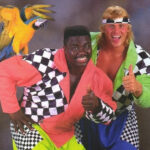The Victoria’s Secret Fashion Show, once a cultural phenomenon, has faced increasing criticism for its limited representation of body diversity. While recent shows have attempted to embrace inclusivity, the 2024 Victoria’s Secret Fashion Show remains a topic of debate. The brand’s history of showcasing primarily thin, conventionally attractive models has left many skeptical of its commitment to genuine change.
Despite the inclusion of some curvy models, the overwhelming majority still adhered to a narrow standard of beauty. The continued emphasis on extremely thin physiques, airbrushed perfection, and revealing outfits raises questions about whether Victoria’s Secret truly understands and values diverse body types.
The show’s focus on the male gaze further complicates its claims of celebrating women. The elaborate costumes, often impractical and overtly sexualized, seem designed to appeal to traditional male fantasies rather than empower women. This disconnect between the brand’s messaging and its presentation reinforces the perception that Victoria’s Secret is out of touch with contemporary values.
The lack of real-world connection between the runway show and the lingerie sold in stores also contributes to the sense of inauthenticity. The fantastical creations showcased on the runway rarely translate into everyday wear, further emphasizing the show’s focus on spectacle over substance. This disconnect raises questions about the show’s purpose and its relevance to the average consumer. Is it about selling lingerie, or perpetuating unrealistic beauty standards?
The 2024 Victoria’s Secret Fashion Show, while making some strides towards inclusivity, ultimately falls short of genuine representation. The continued prevalence of extremely thin models and the emphasis on the male gaze undermine the brand’s attempts to portray itself as empowering and inclusive. Until Victoria’s Secret fundamentally shifts its focus from fantasy to reality, its claims of celebrating women will remain hollow.
